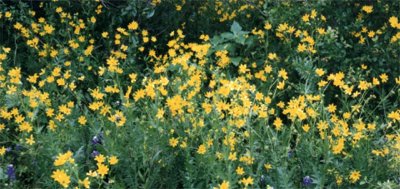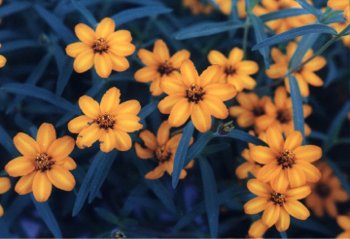Daisies
by Valerie (August 25, 2000)
There are lots of beautiful flowers in the huge Compositae family, and daisies are very typical of the group. Although the three plants described here are not really closely related, they are in the same family and have the connection of the common name "daisy."
  A very satisfying native perennial to grow, Engelmann Daisy (Engelmannia pinnatifida), pictured above, is hardy and prolific. The flower grows from a huge tuberous root and sends up numerous fuzzy stems and leaves, sometimes reaching about 3 feet in height and sprawling about that wide as well. During the spring, each plant produces lots of bright yellow blossoms, and when seen in a field or along a road, they are very eye-catching. As the seed heads mature, the stems die and by mid-summer, almost all of the foliage is dead and the plant remains dormant until late winter. A very satisfying native perennial to grow, Engelmann Daisy (Engelmannia pinnatifida), pictured above, is hardy and prolific. The flower grows from a huge tuberous root and sends up numerous fuzzy stems and leaves, sometimes reaching about 3 feet in height and sprawling about that wide as well. During the spring, each plant produces lots of bright yellow blossoms, and when seen in a field or along a road, they are very eye-catching. As the seed heads mature, the stems die and by mid-summer, almost all of the foliage is dead and the plant remains dormant until late winter.

Zexmenia (Wedelia hispida) is another well-adapted native perennial. Other names for this plant include orange daisy and hairy wedelia. It is extremely common, grows under any conditions, and is easy to start from seed. The dark green foliage is attractive, but the plant gets to be rather spreading and messy looking, and the flowers are usually not very profuse during the hottest parts of the summer. It seems that when the temperature is over 100°F many species of plants either stop producing blossoms or the individual flowers are small and misshapen. The zexmenia flowers are not very large but they are a beautiful orange color and the plant blooms non-stop from late winter to early winter.
  A later article covers four other species of daisies in More Daisies. |